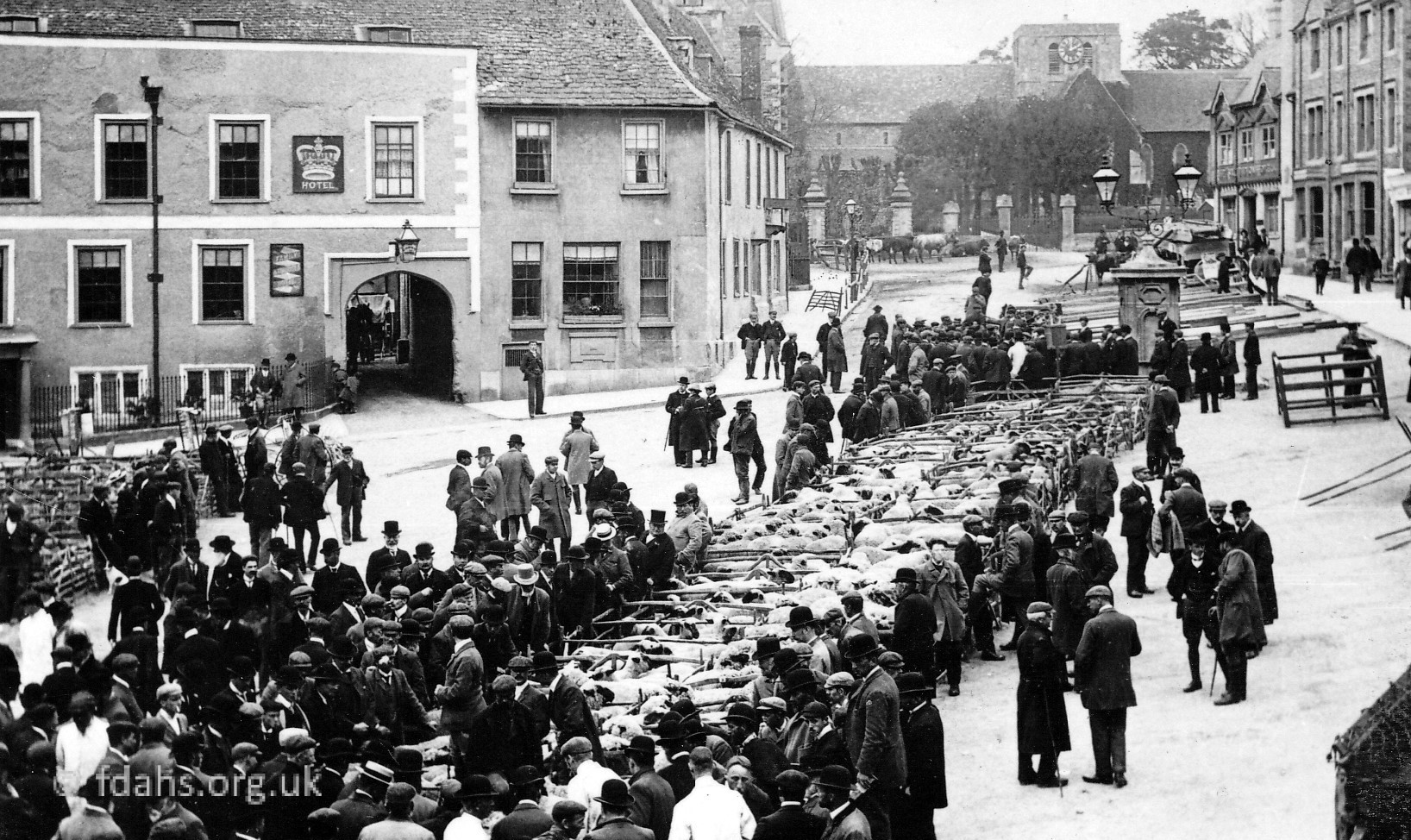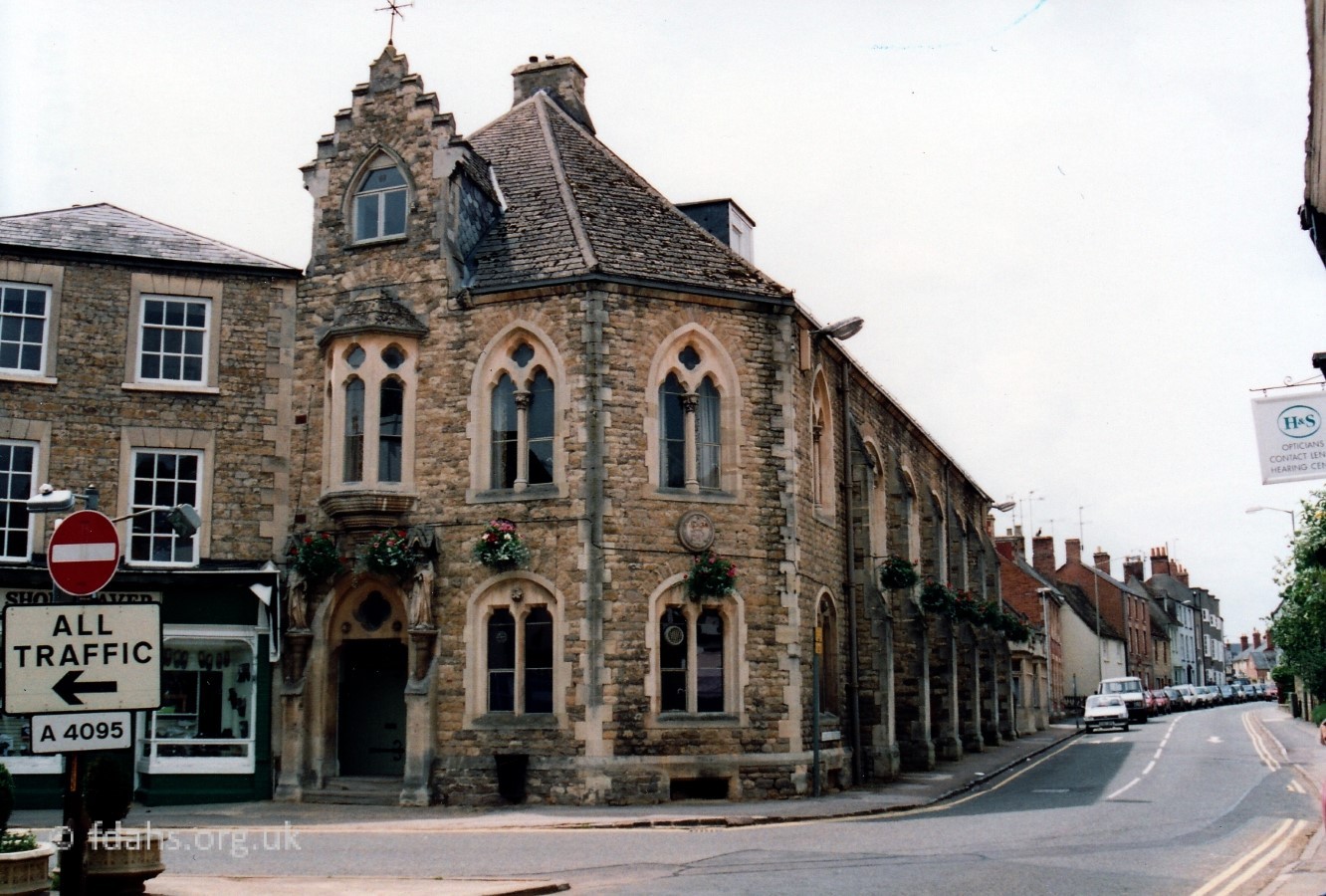 The Faringdon Corn Exchange is a beautifully proportioned hall built on the site of the Green Dragon Coaching Inn. It opened in 1863 as a farmers’ dealing centre for sale of local produce and so that some of the transactions in the Corn Market could take place under cover.
The Faringdon Corn Exchange is a beautifully proportioned hall built on the site of the Green Dragon Coaching Inn. It opened in 1863 as a farmers’ dealing centre for sale of local produce and so that some of the transactions in the Corn Market could take place under cover.
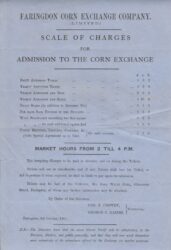 In 1862 the Corn Exchange Company Ltd was formed. There were several sites proposed for the new building including that owned by Charles Gerring which was the Green Dragon public house. This was the site that was agreed upon and plans and estimates were obtained from John Luker of Faringdon. It was also decided to have a Savings Bank built at the rear of the building and the estimated cost was £1,400. Wheeler of Faringdon was instructed to build the Corn Exchange and the final cost was £2,310 11s 0d. The excess cost was covered by a mortgage of £600 and the building was insured with Sun Fire Office for £900. The interior was lit by gas lighting and John White junior was appointed as Clerk and Collector for the company at 10 guineas a year. The opening of the Corn Exchange took place on 29th December 1863. A poster advertised the scale of charges that would apply to those that wished to expose corn for sale and those wanting to attend the sales.
In 1862 the Corn Exchange Company Ltd was formed. There were several sites proposed for the new building including that owned by Charles Gerring which was the Green Dragon public house. This was the site that was agreed upon and plans and estimates were obtained from John Luker of Faringdon. It was also decided to have a Savings Bank built at the rear of the building and the estimated cost was £1,400. Wheeler of Faringdon was instructed to build the Corn Exchange and the final cost was £2,310 11s 0d. The excess cost was covered by a mortgage of £600 and the building was insured with Sun Fire Office for £900. The interior was lit by gas lighting and John White junior was appointed as Clerk and Collector for the company at 10 guineas a year. The opening of the Corn Exchange took place on 29th December 1863. A poster advertised the scale of charges that would apply to those that wished to expose corn for sale and those wanting to attend the sales.
Since 1863 it had many and varied uses, for instance:
1871. Part was in use by the ‘Faringdon Chamber of Agriculture and Agriculture Library’. This part was subsequently let as a ‘Private Billiard Club.’
1884. The ‘upstairs’ room was let to the Faringdon Reading Room Society.
1889. In this year on the 2nd July, the Savings Bank Building, which was not then part of the Corn Exchange, was offered for public auction, and was purchased by the Faringdon Corn Exchange Co., Ltd., for £266. 6s.
1893. In this period the Savings Bank Building, now part of the Corn Exchange appears to have been used by the ‘Freemasons’.
1901. The Directors of the Company consented to the use of the Corn Exchange for Public Bodies to assemble before proceeding to Church on the occasion of the Funeral Service of H. M. late Queen Victoria on 2nd February, 1901. About this time the ‘lower’ room was let to Mr. George Adams (Commission Agent) at £5 per annum.
1904. The ‘upper’ room was let to the ‘Conservative Association’ for one year at a rental £8.
1905. First mention of the Corn Exchange being let for ‘Badminton’ at a rental of 8s. 6d for each 3½ hours session – gas extra.
1911. The Hall had practically ceased to be used for its original purpose as a farmers’ dealing centre, although the gallery still held the store of rat-infested grain sacks. The possible sale of the Corn Exchange and the Savings Bank Building was contemplated by the Directors.
1913. Mr. George Westal made application to use the Hall for Animated Picture Shows – two nights a week. Agreed at a rental of £1 per night.
1915. New heating apparatus installed plus work by carpenter at a cost of £110.
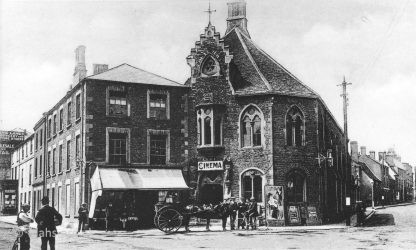 1919 – 1935. Upper room let to Bridge & Co., at a rental of £17 per annum. During this period the buildings were used as a Cinema, which opened on Mondays, Thursdays and Saturdays, for hunt balls, Freemasons, North Berks Conservative Association and many other social events by many organisations.
1919 – 1935. Upper room let to Bridge & Co., at a rental of £17 per annum. During this period the buildings were used as a Cinema, which opened on Mondays, Thursdays and Saturdays, for hunt balls, Freemasons, North Berks Conservative Association and many other social events by many organisations.
1936. On 13th July, the Faringdon Corn Exchange Co Ltd., who had had the building built decided on voluntary liquidation and sold it to the Faringdon Parish Council for £1,000. It was put up for auction first but nobody wanted to buy it.
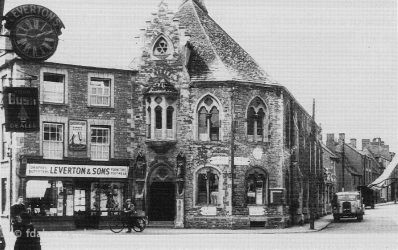 1953. The Corn Exchange is now being fully used as a public hall for dances, dinners and meetings. Bridge Turf Accountants was run by Mr F. Bowerman from an office at the front. The plaque commemorates Queen Elizabeth II’s Coronation in 1952.
1953. The Corn Exchange is now being fully used as a public hall for dances, dinners and meetings. Bridge Turf Accountants was run by Mr F. Bowerman from an office at the front. The plaque commemorates Queen Elizabeth II’s Coronation in 1952.
There were dances every Friday or Saturday night and ‘Have a Go’ shows run by Mr Dulik were held there to entertain the youth of Faringdon.
1996. The building was first licensed for marriages.
References:
- The Changing Faces of Faringdon and Surrounding Villages – Book 2 p39. By Rosemary Church, Jim Brown, Millie Bryan and Beryl Newman. Robert Boyd Publications 2001.
- Faringdon and the Vale Venture, Issue 17, October 7th 1972.
